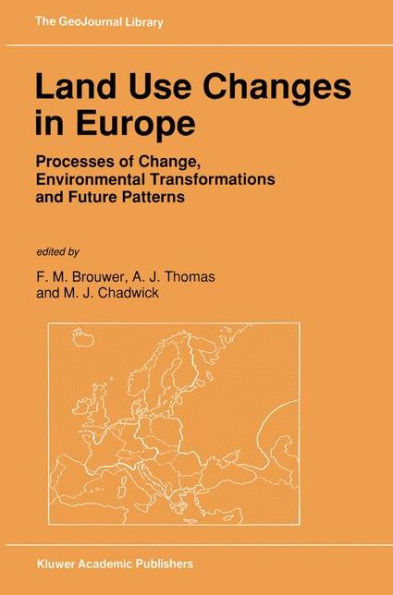The patterns of land use that have evolved in Europe reflect the boundaries set by the natural environment and socio-economic responses to the needs of the population. Over the centuries man has been able to overcome increasingly the constraints placed on land use by the natural environment through the development of new technologies and innovations, driven by an increasing population and rising material expectations. However, activities are still ultimately constrained by natural limitations such as climatic characteristics and associated edaphic and vegetational features. A major problem for land management, in its broadest sense, can be a reluctance to foresee the consequent ecological changes. This means that mitigating strategies will not be implemented in time to prevent environmental degradation and social hardship, although in many parts of Europe, over some centuries, demands have been met in a sustainable way, by sound, prudent and temperate expectations that have dictated management regimes. The management of land in Europe has always been a complex challenge: land is the primary, though finite resource. DeciSions regarding the use of land and manipulation of ecosystem dynamics today may affect the long-term primary productivity of the resource. Decisions to change land use may be virtually irreversible; urbanization is an illustration of the influence of population density on the land resource.
1111672024
Land Use Changes in Europe: Processes of Change, Environmental Transformations and Future Patterns
The patterns of land use that have evolved in Europe reflect the boundaries set by the natural environment and socio-economic responses to the needs of the population. Over the centuries man has been able to overcome increasingly the constraints placed on land use by the natural environment through the development of new technologies and innovations, driven by an increasing population and rising material expectations. However, activities are still ultimately constrained by natural limitations such as climatic characteristics and associated edaphic and vegetational features. A major problem for land management, in its broadest sense, can be a reluctance to foresee the consequent ecological changes. This means that mitigating strategies will not be implemented in time to prevent environmental degradation and social hardship, although in many parts of Europe, over some centuries, demands have been met in a sustainable way, by sound, prudent and temperate expectations that have dictated management regimes. The management of land in Europe has always been a complex challenge: land is the primary, though finite resource. DeciSions regarding the use of land and manipulation of ecosystem dynamics today may affect the long-term primary productivity of the resource. Decisions to change land use may be virtually irreversible; urbanization is an illustration of the influence of population density on the land resource.
54.99
In Stock
5
1

Land Use Changes in Europe: Processes of Change, Environmental Transformations and Future Patterns
529
Land Use Changes in Europe: Processes of Change, Environmental Transformations and Future Patterns
529Paperback(Softcover reprint of the original 1st ed. 1991)
$54.99
54.99
In Stock

Product Details
| ISBN-13: | 9789401054539 |
|---|---|
| Publisher: | Springer Netherlands |
| Publication date: | 10/17/2012 |
| Series: | GeoJournal Library , #18 |
| Edition description: | Softcover reprint of the original 1st ed. 1991 |
| Pages: | 529 |
| Product dimensions: | 6.10(w) x 9.25(h) x 0.04(d) |
From the B&N Reads Blog
